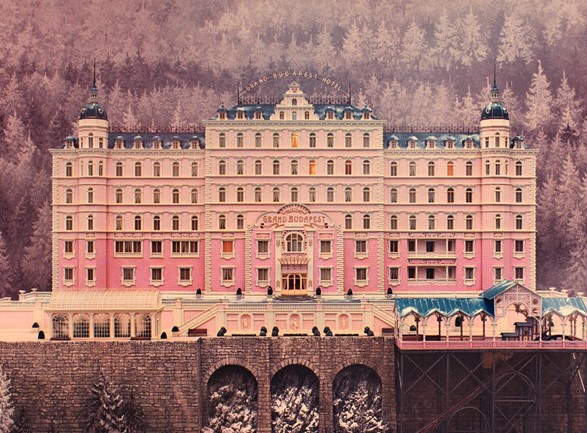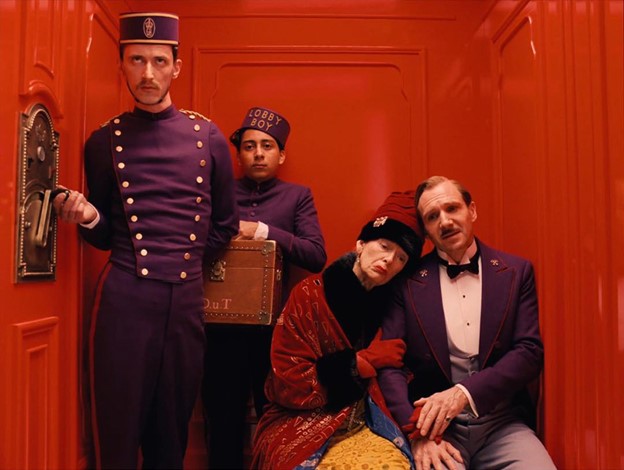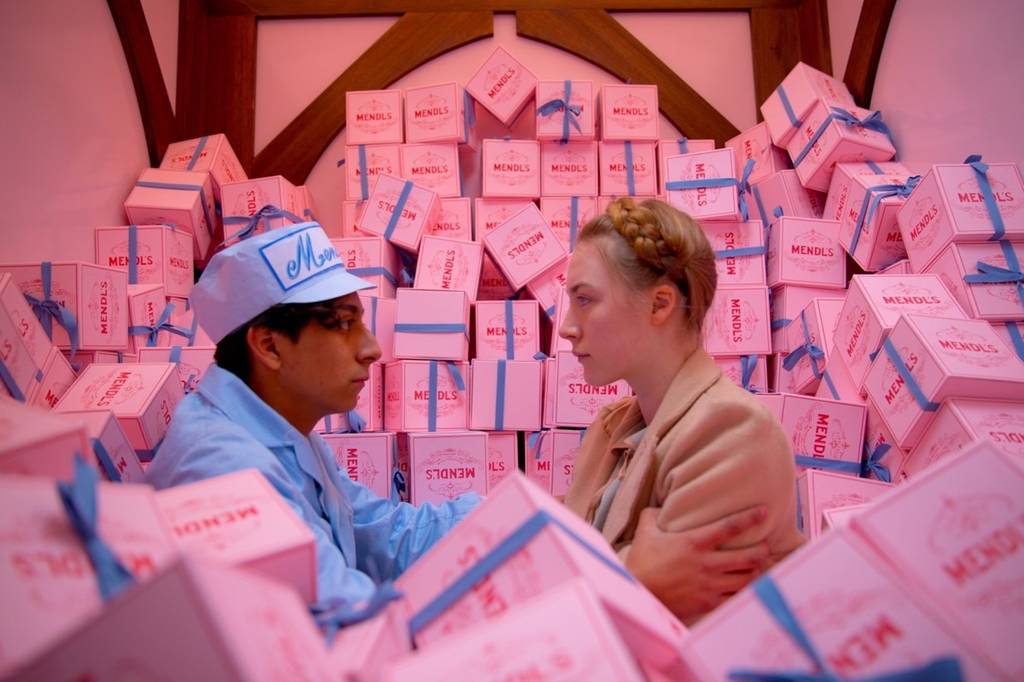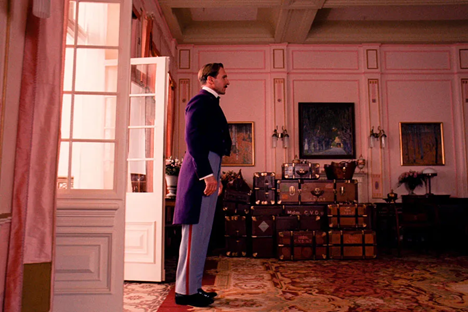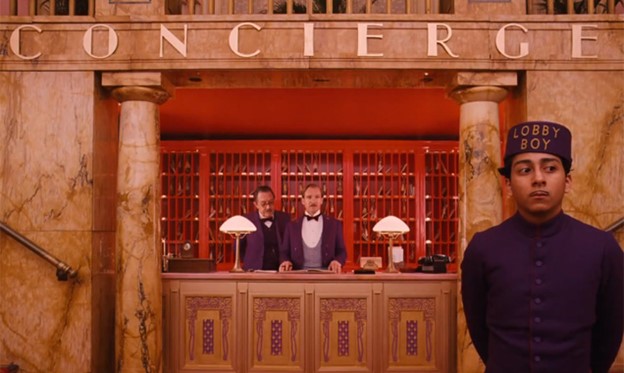The Grand Budapest Hotel (2014) follows a writer who is interested in the infamous hotel known as the Grand Budapest Hotel, which is no longer in its prime, and has since become run-down. The writer meets with the current owner of the hotel known as Zero Moustafa (F. Murray Abraham), whose story starts with him as a mere lobby boy. Zero talks the writer through his beginning years at the hotel, starting with Madame D (Tilda Swinton) as the owner who eventually leaves the hotel to Monsieur Gustave (Ralph Fiennes) when she is mysteriously murdered. Monsieur Gustave was a lover of Madame D and was accused of her murder when she passed, leaving him in prison. He eventually breaks out and works with the young Zero (Tony Revolori) to prove his innocence. Through the ups and downs of the film, Zero meets Agatha (Saoirse Ronan), a baker who works for Mendel’s Bakery. They fall in love and become engaged. At the end of the film, he explains to the writer that Monsieur Gustave and Agatha both have died. Monsieur Gustave was shot by the military and Agatha tragically fell ill and died from a disease.
This establishing shot (Figure 1) from the beginning of the film shows the infamous Grand Budapest Hotel in which a majority of the film takes place. Pink colors are prevalent in this shot and throughout the entire film. The color scheme in this photo represents the unrealistic and dreamlike world in which the story of the Grand Budapest Hotel takes place. The hotel is a character of its own in this film. With the changing color schemes throughout the decades, the hotel changes just as much as the characters (Stevens).
This shot (Figure 2) does wonders for the advancement of the characters. The costumes and actor expressions create the viewer’s interpretation of the characters’ personalities. The elevator man stands in a contorted stance, giving off the quirky vibe that the hotel has. Monsieur Gustave and Madame D comfort each other after Madame D openly expresses that she fears for her life. She wears red velvet and black fur with an unusually large hat and gold broach, all symbolizing her wealth. The red she wears also hints at her murder which mysteriously takes place after this. Zero stands in the back looking disheveled with his crooked hat and awkward way of holding Madame’s suitcase. He leads us to believe in this shot that he is hard working, yet a bit of a mess at the same time. The purple that the elevator man, Zero, and Monsieur Gustave all wear suggests royalty and wealth, which they desperately attempt to portray at the hotel.
Unlike many of the other shots in the film, the lighting in this specific shot (Figure 3) is very high key with no shadows, emphasizing the love between Zero and Agatha which they have put on hold to help Gustave. The unusually large amount of bright pink and blue boxes emphasizes the dreamlike world that they are in. Agatha’s unique hairstyle suggests that her character is fun and quirky, as she fits in with the rest of the unusual characters.
The fine attention to detail that Wes Anderson displays in each and every shot in this film is absolutely incredible. In this particular shot (Figure 4), Monsieur Gustave is shown walking into Madame D’s room full of luggage, which was specially made by Prada to fit the time period that this film takes place (W Magazine). In a dreamlike world, these suitcases show a bit of authenticity from the real world. The paintings on the wall are bleak and shadowy, with no emphasis on them at all. Rather, the focus of this shot is the pink and purple colors which are prevalent throughout the film.
Although the Grand Budapest Hotel is large and complex, with designs in the carpet and walls, this shot shows nothing but simplicity in a complex setting. Our eyes are not drawn to the designs, but rather to the characters and the main color scheme for this shot, purple and red. The colors in this image (Figure 5) draw us not to the hotel, but to the characters, mainly Zero, who stands with a stern face and slightly crooked hat, again characterizing him as the disheveled, yet hard-working boy he is.
These shots from The Grand Budapest Hotel are iconic to the film in many ways. The precise symmetry and color coordination in each of these shots were strategically planned out by Wes Anderson, and they did wonders for the mise-en-scene of the film.
Author Biography
Carrie Goodison is a senior film student at the University of North Carolina Wilmington (UNCW). She was born in Buffalo, New York, and moved to Clayton, North Carolina, with her family in early 2015. In 2017, she began her studies at UNCW. Her focus is on film editing and she hopes to be an editor for commercials and music videos after graduation in 2022.
References
Stevens, Isabel. “The Anderson Touch.” Sight & Sound, vol. 24, no. 3, Mar. 2014, pp. 30–34. EBSCOhost, search-ebscohost-com.liblink.uncw.edu/login.aspx?direct=true&db=f3h&AN=94382374&site=ehost-live.
W Magazine. “Prada for The Grand Budapest Hotel.” W Magazine, 3 Mar. 2014, https://www.wmagazine.com/story/grand-budapest-hotel-luggage. Accessed 16 Nov. 2021.

